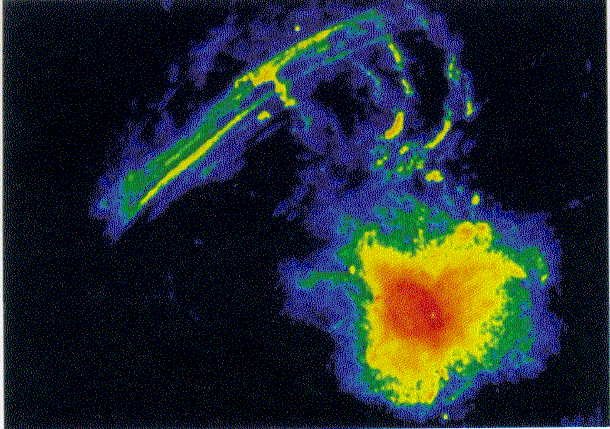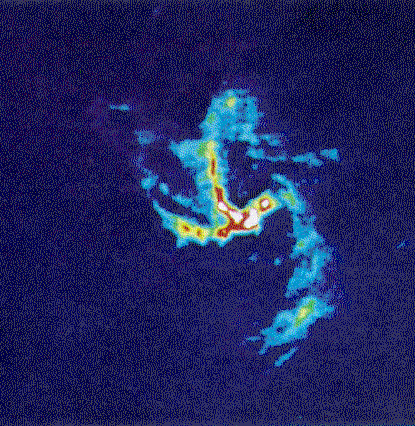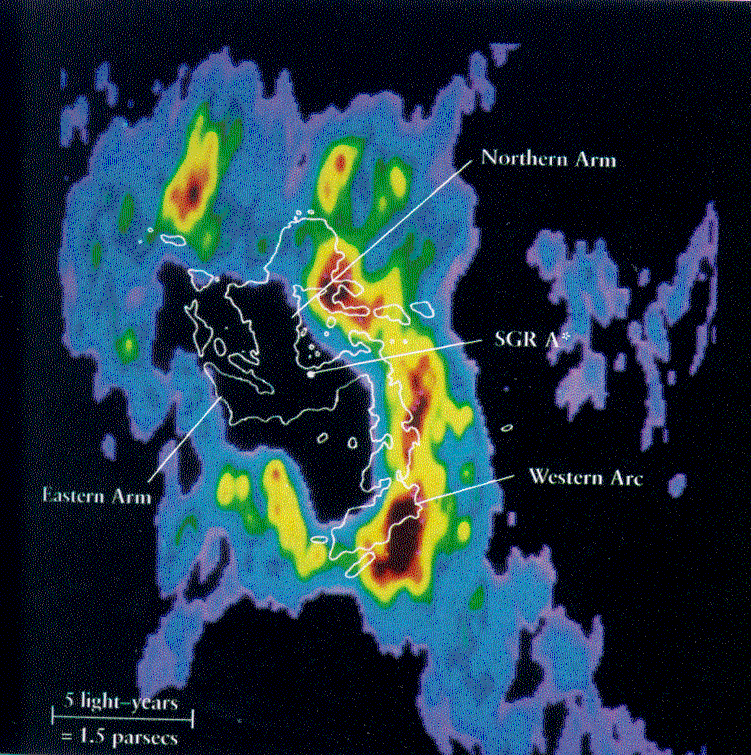Inventory of the Galactic Center
How do we study the center of the Galaxy?
-
28 magnitudes of optical extinction -- can't
do it in visible light
-
infrared emission (2.2
microns - K band)
-
much less obscured
-
old Population I red giants (T ~ 4000 K) are brightest in
the infrared.
-
radio emission
-
unobscured
-
not emission from stars
-
non-thermal emission (synchrotron emission, supernovae, etc)
At the distance of the Galactic Center, 1" is about 0.05
parsecs.
What do we see?
A rising density of stars towards the center: n
~ r-2 from 1 parsec to 0.1 parsec. Stars are very
close together, so close interactions are common.
IRS 16: A bright infrared
source located very close to the density peak of stars. IRS actually consists
of 15 or more individual sources, most likely very luminous O and B stars.
A recent starburst?
Lots of non-thermal synchrotron
radio emission:

The brightest radio source is called
Sagittarius A
(Sgr A). Sgr A is not a single object, but a complex region at the center
of the Galaxy.
-
Sgr A East
is most-likely a recent supernovae remnant (again, perhaps suggesting a
recent starburst?).
-
Sgr A West
is a bizarre HII region which shows a mini-spiral pattern:

-
Sgr A*
is a very bright, compact radio source located in the center of Sgr A West.
Surrounding Sgr A West is a circumnuclear
molecular ring (from R=2-8 pc).
 This gas is much hotter
and denser than typical molecular clouds:
This gas is much hotter
and denser than typical molecular clouds:
|
|
Normal Molecular Clouds
|
Circumnuclear Molecular Ring
|
|
Temperature
|
15 K
|
300 - 400 K
|
|
Density
|
100 - 1000 cm-3
|
1-5 x 104 cm-3
|
-
The inner edge of the ring is sharp,
too sharp to be a long-lived feature (random motions of the gas would smear
out any sharp edge in < 105 years).
-
Inside the ring, the gas is ionized;
the ring itself is mostly molecular.
-
This all suggests that a recent explosion
of some sort carved out the central part of the ring. How much energy is
needed? About 1051 ergs, which is sort of what a supernova releases...
What's going on down here?



